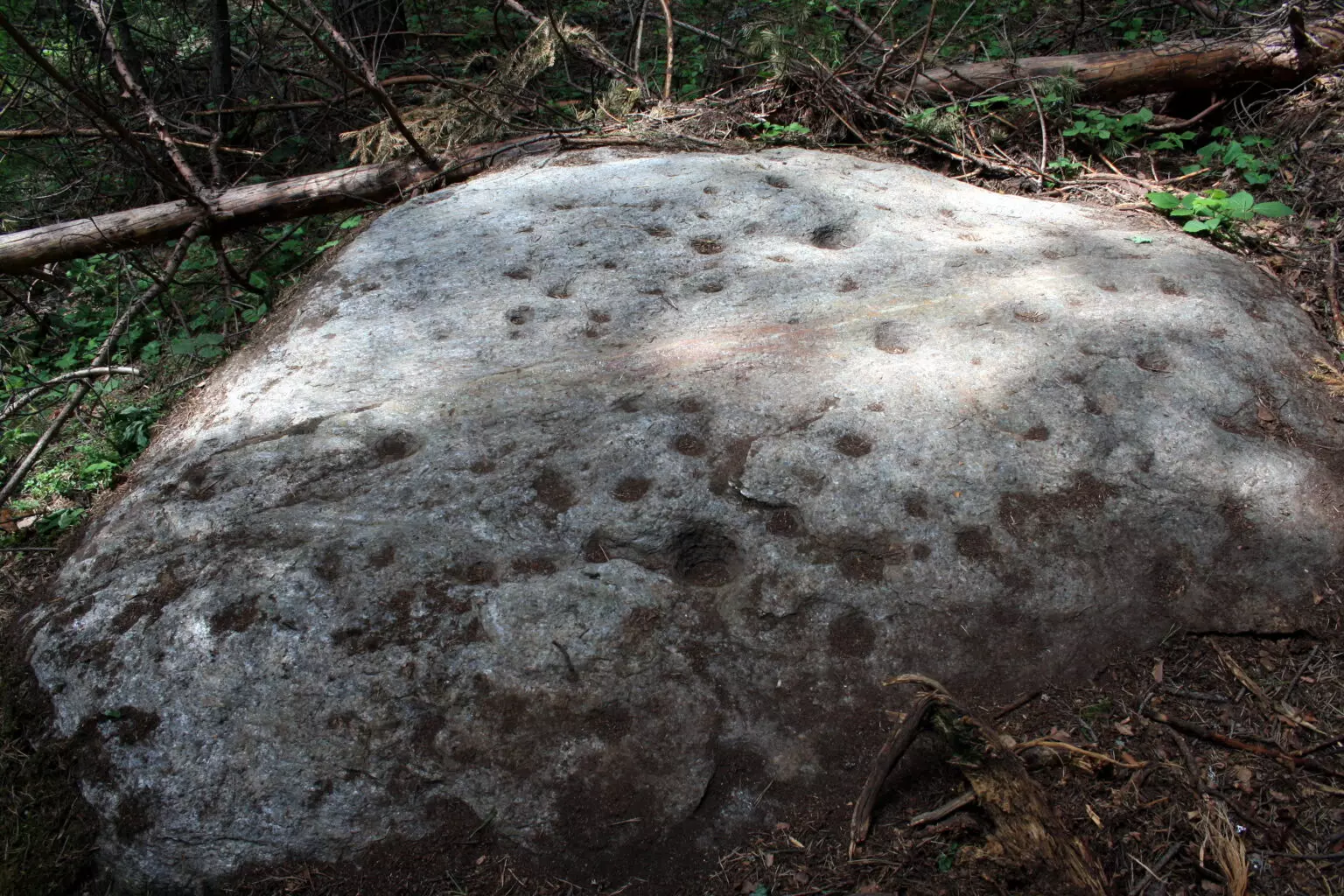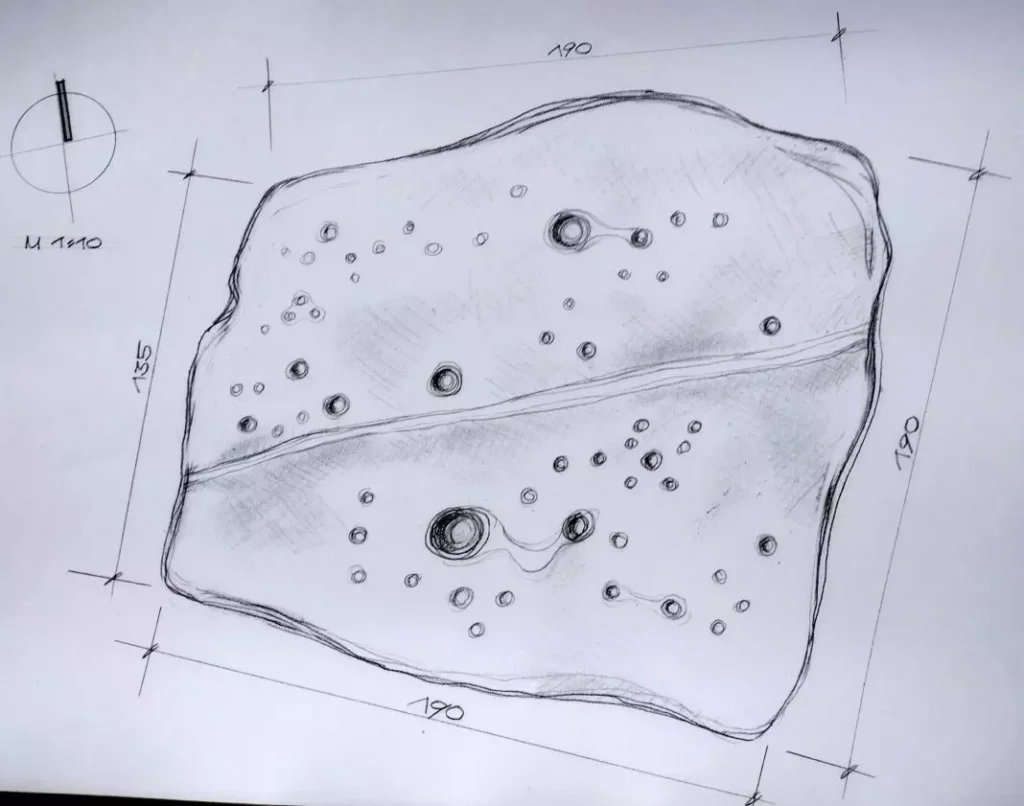Stone Stargazer: Bulgaria’s Prehistoric Star Map Emerges from the Earth
A slab nearly the size of a small room—roughly 2 by 3 meters—lies in a forest clearing near Skobelevo, Bulgaria. Carved with 56 cup-shaped depressions and intersected by a natural marble vein, this stone slab may be one of the earliest star maps ever created, dating back between 2000 and 500 BCE.
Researchers Georgi Georgiev and Ivelina Georgieva stumbled onto the slab in 2013 during a routine survey near Thracian burial mounds. They noticed its precise east–west alignment and the vein of marble that seems to echo the shimmering path of the Milky Way in the night sky.
Mapping the Ancient Sky with Stone Tools
Looking at the 56 carved cups—24 clustered in the northern half, 32 in the southern—one can trace Ursa Major, Leo, Cassiopeia, Cygnus, Lyra, and the Pleiades. These depressions aren’t random: they mirror the brightness and positions of stars, suggesting early astronomers understood constellations and encoded them on stone.
Imagine proto-archaeoastronomers treating this slab as a “star clock,” tracking seasons and ritual dates by observing how natural light interacted with the rock. The mica-laced surface sparkles in daylight—nature’s way of echoing the night sky on earth.
Ancient Science Meets Ritual Practice
Without direct organic material, radiocarbon dating remains impossible. Instead, archaeologists rely on context: the slab’s proximity to Neolithic and Thracian ritual sites, common dating techniques, and comparisons with artifacts like the Nebra Sky Disc in Germany support a Late Neolithic–Early Iron Age timeline.
Nearby stones—one bearing a cylindrical groove possibly aligned eastward—hint at a ritual complex designed around astronomical observation.
Carving Continuity Across Millennia
This Bulgarian celestial chart joins a small but remarkable family of prehistoric star mappings—like the ivory tusk from Germany (~32,500 BCE) and the Bronze Age Nebra Sky Disc (~1600 BCE).These alignments across Europe reveal that ancient communities were not just stargazers—they were storytellers using celestial patterns to mark time, season, and social ritual.
Threats and the Path to Preservation
Despite its value, the slab at Skobelevo remains unprotected, not yet listed in Bulgaria’s national archaeological registry. Georgiev and Georgieva are campaigning for legal recognition. So far, GPS mapping, traceological analysis, and heliacal rising observations confirm that the site was purposefully designed with astronomical knowledge in mind
A Lunar Reflection on Human Curiosity
This carved stone isn’t just a remnant of ancient ingenuity—it’s a reflective surface where our distant ancestors saw the cosmos and asked their own questions:
What rhythms govern our world?
How shall we measure time?
Where do we belong in this vastness?
As modern readers, we may ask: what questions will our own creations—satellite arrays, AI telescopes—leave behind for future civilizations to ponder?



